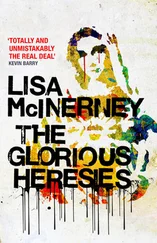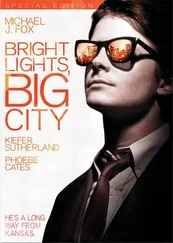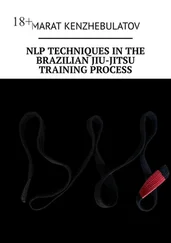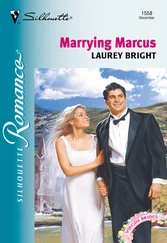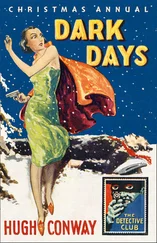When she went downstairs to the kitchen, he put down his spatula, embraced and kissed her, his day-old beard rasping her face, then returned to his cooking, humming what sounded like “Rehab.” Was it just her imagination, her new knowledge, or was he way too alert and energetic at this early hour? “I thought you didn’t cook?”
“Only breakfast.”
“Do we have plans today?” she asked, taking a seat at the kitchen table.
“We do. After breakfast we’re getting in the car.”
“To go where?”
“That’s a surprise.”
After polishing off a poached egg on toast, Corrine went upstairs to dress.
They drove down Route 7 to Williamstown, a place she hadn’t laid eyes on in three decades, the campus an attractive architectural mélange of Federal, Gothic, Romanesque and various flavors of modernism.
“Did you love it?” she asked as they turned up the driveway of what appeared to be a white marble Doric temple.
“Mostly,” he said. “Do you know where we are?”
“Not exactly,” she said.
“The Clark Art Institute. I’ve arranged for a private tour.”
A young man was waiting at the main entrance, and he led them inside. She remembered now — she’d spent a hungover morning here, hiding from her date among the Renoirs and Monets. The guide was explaining that the Clarks had been wealthy New York collectors who, fearing that nuclear apocalypse might wipe out Manhattan, had built this museum in the Berkshires to house their collection, thereby greatly disappointing the trustees of the Metropolitan Museum of Art.
“Hard to believe that they could have accumulated a collection of this magnitude in a single generation,” Luke said.
“You sound jealous,” Corrine said.
He shrugged.
“Is there anything in particular you’d like to see?” their guide asked.
“Could you show us Interior at Arcachon ?” Luke said.
“Oh, certainly. That’s one of my favorites.”
Luke looked at Corrine expectantly.
“The Manet,” she said after a pause, remembering.
“You told me it was your favorite painting,” he said, looking disappointed, as they followed their guide across the marble corridor.
“I can’t believe you remembered that.” More to the point, she couldn’t believe she’d almost forgotten it. She had said that, and it was true, or at least it probably was true when she told him that it was, though she’d forgotten in the interim. Had it really been her favorite painting in the long years between first viewing it as a college student and talking to Luke about art in the days after 9/11? It seemed more likely that the turmoil of that time had, like an earthquake or a volcanic eruption, thrust up buried memories and emotions, that this particular memory had been reawakened in the aftermath. What was most significant to her, at this moment, was the fact that Luke had remembered. This whole trip, she saw, had been organized around the impulse to reunite her with her putative favorite painting.
And here it was: a small gray-brown canvas, an intimate interior, a young man smoking a cigarette while an older woman across the table, his mother, looks up from her writing to take in the view of the sea through the open French windows. At the time, decades ago, she’d been hard-pressed to understand why the painting made such an impression on her, having none of the heroic eroticism of his Olympia, or the tragic grandeur of The Execution of Emperor Maximilian. But the sense of calm — and restfulness — was mesmerizing; the gray of the walls and the sea was the color of afternoon, of contemplation.
“I know it’s just a small domestic scene,” she said, feeling obliged to explain her esteem for the painting. “But back then it made me incredibly wistful and nostalgic, I think because my own family was in such a state of perpetual conflict.”
“Manet had just returned from the Franco-Prussian War,” the guide said, “and you can feel how deeply he relished this peaceful family vignette. The ease and serenity are palpable.”
“Why don’t you meet us in about ten minutes in front of the Piero della Francesca,” Luke told him.
“I can’t get over your remembering this,” Corrine said as the young man slunk off. “Or that you brought me here. It’s very…I’m impressed. And touched.” She kissed his stubbly cheek.
“It is a lovely Manet,” he said.
“Had you noticed it before? You were probably disappointed when I told you that this little canvas was my favorite painting.”
“I don’t remember noticing it when I was at Williams, but I came up here after you told me that to see it.”
They contemplated it together until he said, “Of course, my favorite Manet would have to be Le Déjeuner sur l’Herbe. ”
“But of course. Heroic scale, clothed men, nude women — what’s not for an alpha male to love?”
He chose to ignore her taunt. “When I was growing up in Tennessee, I had these godparents, not actual godparents but kind of spiritual godparents, the Cheathams. They were friends of my parents and I used to fantasize that they were my real parents. They were very sophisticated and collected modern art, this in a place where everyone hung hunting prints and family portraits. Joleen Cheatham took me to museums and taught me about art. They had this drawing or maybe a print, a late Picasso called Le Déjeuner sur L’Herbe, which entranced me. I didn’t know at the time it was a riff on Manet’s painting, but I was fascinated by the composition, two nude women among clothed men. I also had a serious crush on Joleen — we’re talking erotic dreams and fantasies, and it all got mixed up together, my feelings for Joleen and art and my early interest in sex. Then later, as a student, when I saw Manet’s Déjeuner sur l’Herbe, it was like stumbling on the key to the tortured mysteries of my adolescent sexual development.”
“You don’t seem all that tortured to me,” she said.
“I sublimate like hell.”
“Perhaps,” she said, “I owe this Joleen a debt of gratitude.”
—
They strolled through the galleries, browsing, grazing on the treasures — the gemlike Piero, the seascapes by Turner and Homer. Afterward he showed her scenes of former triumphs and failures — the freshman dorm on the quad, where he’d lost his virginity; the stately Federalist classroom building, where he’d defended his thesis on income distribution; the Gothic chapel, where he’d married Sasha. He left her at the library while he went to visit his old professor at the nursing home, and afterward he took her to lunch at a restaurant on a hillside south of town.
Touched by the extravagant gesture of the private tour and the fact that he’d remembered her story about the Manet, she tried to explain to him the insecurity she’d felt at the time, the tension and psychic violence, the shouting matches and ruined holidays. She was in the middle of a story about a Thanksgiving shoving match when he opened his menu and began to peruse it.
“Are you reading the menu ?”
He lowered it and looked up, startled by her tone.
“I was just—”
“I was in the middle of telling you about the traumatic events of my childhood and you start reading the goddamn menu ?”
“I’m sorry.”
“Was it that boring?”
“No, I promise, I really was listening.”
“Go ahead. Focus on the menu. I wouldn’t want to distract you from planning your meal.”
“I’m sorry. Sometimes I just have difficulty focusing.”
“Is that why you take Adderall?”
“Well, yes, actually.”
“I just happened to see it in your Dopp kit.”
“It must be nice to have X-ray vision.”
Читать дальше

